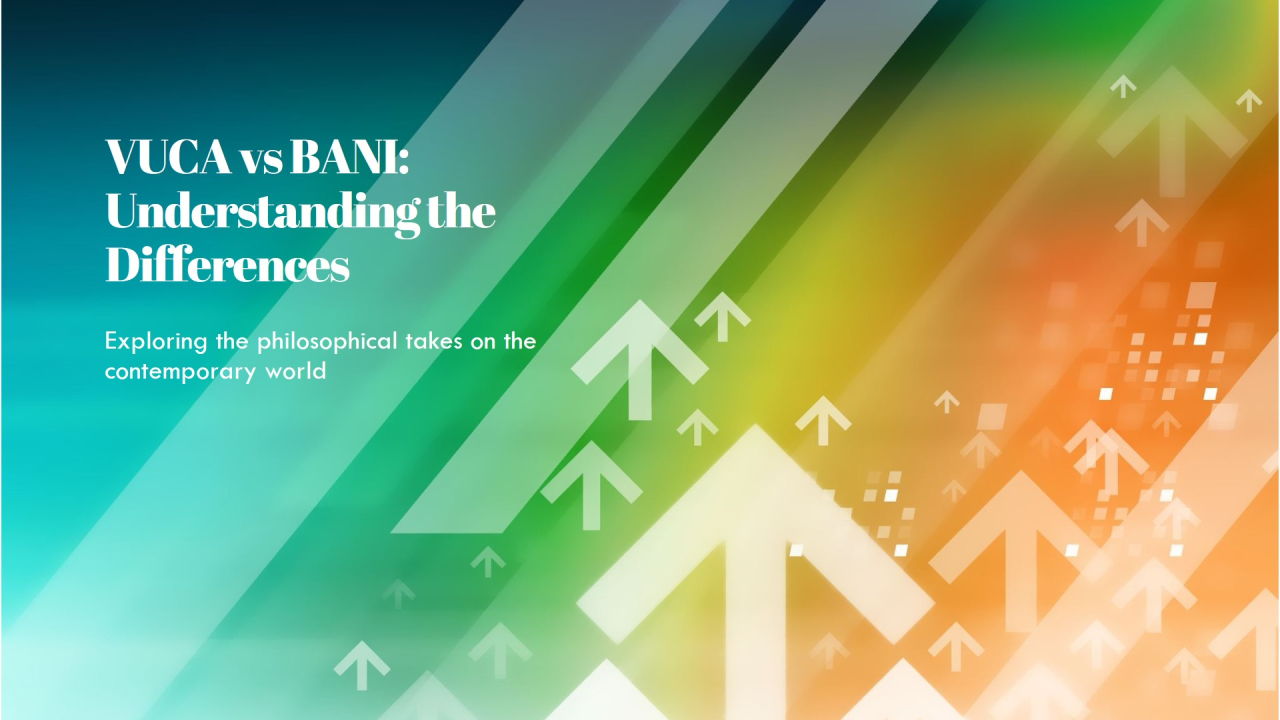
VUCA and BANI: Understanding the Differences
VUCA and BANI, though similar acronyms offer distinct philosophical perspectives on the nature of our modern world. Here’s a breakdown of their key differences:
VUCA (Volatility, Uncertainty, Complexity, Ambiguity):
- Focus: Characteristics of the environment
- Philosophy: The world is inherently unpredictable and constantly changing. We need to adapt and be flexible to navigate these challenges.
- Keywords: Fluidity, adaptability, resilience
BANI (Brittle, Anxious, Non-linear, Incomprehensible):
- Focus: The human experience within VUCA
- Philosophy: The rapid changes of VUCA create a sense of fragility, anxiety, and difficulty in making sense of the world.
- Keywords: Emotional impact, meaning-making, coping mechanisms
Here’s an analogy: Imagine VUCA as a stormy sea. The waves are unpredictable (volatile), the currents are uncertain, there are many factors at play (complexity), and the visibility is low (ambiguity). BANI describes how this stormy sea makes us feel – anxious, worried that the boat might break (brittle), tossed around by unpredictable currents (non-linear), and struggling to see where we’re going (incomprehensible).
VUCA is objective, focusing on the external world’s characteristics. BANI is subjective, reflecting the human response to those characteristics.
Understanding both perspectives is crucial. VUCA helps us develop strategies for navigating a difficult environment, while BANI reminds us of the human cost of constant change and the need for emotional resilience.
BANI emerged as a response to the limitations of the existing VUCA framework in capturing the complexities of the modern world. Here’s a breakdown of its development:
Why BANI?
- VUCA’s Shortcomings: The VUCA framework, developed during the post-Cold War era, focused on volatility, uncertainty, complexity, and ambiguity. While valuable, it didn’t fully capture the emotional and psychological impact of these factors on individuals and societies.
- Rise of Global Challenges: Events like the 2008 financial crisis and the increasing interconnectedness of the world highlighted the fragility of systems and the potential for cascading disruptions.
- Increased Anxiety and Difficulty Making Sense: The rapid pace of technological change, social media’s constant information flow, and a sense of global instability created heightened anxiety and a feeling of things being incomprehensible.
How BANI Emerged:
- Coined by Jamais Cascio: American anthropologist and futurist Jamais Cascio is credited with developing the BANI framework. He recognized the need for a more nuanced understanding of the contemporary world beyond volatility and uncertainty.
- Building on VUCA: BANI doesn’t replace VUCA; it builds upon it. It acknowledges the core characteristics of VUCA but adds a layer of human experience - the feeling of brittleness, anxiety, the non-linear nature of change, and the struggle to make sense of it all.
BANI provides a more holistic perspective on our current reality. It acknowledges the challenges of the external environment (VUCA) and emphasizes the psychological and emotional toll they take on us (BANI). This deeper understanding allows for developing better-coping mechanisms and strategies for navigating our complex world.

Recent Comments